#the mystical rose: selected poems
Text

Adélia Prado, from The Mystical Rose: Selected Poems translated by Ellen Doré Watson; "Letter"
Text ID: I'm truly crazy. From longing. All because of you.
#adélia prado#the mystical rose#the mystical rose: selected poems#poetry#poetry in translation#brazilian literature#lit#miscellanea
3K notes
·
View notes
Text
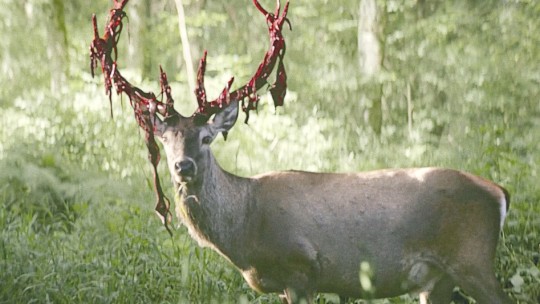

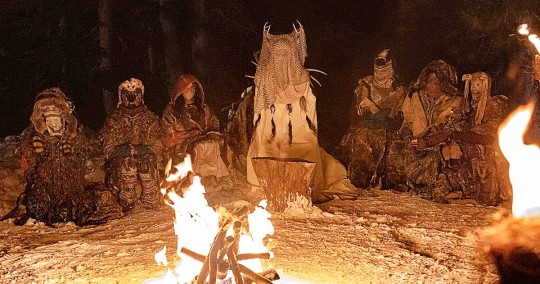
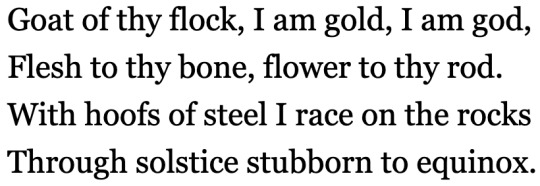
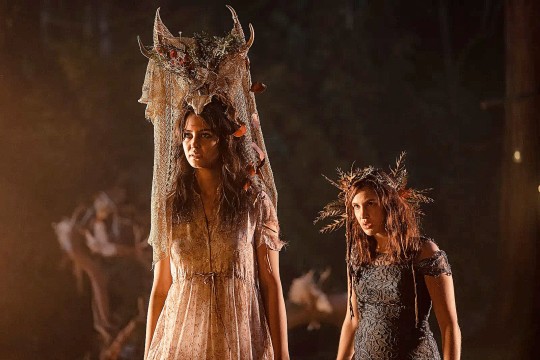









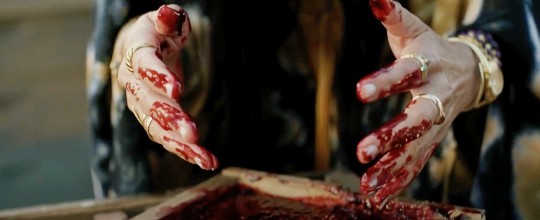


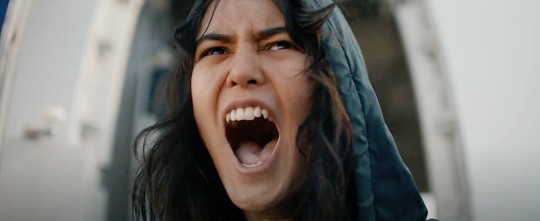


yellowjackets (2021-present) cr. ashley lyle & bart nickerson / the collected prose works, 'dracula', bram stoker / hymn to pan, aleister crowley / the mystical rose: selected poems translated by ellen doré watson, 'nigredo', adélia prado / the lives of the heart, 'three foxes by the edge of the field at twilight', jane hirshfield / lore, alexandra bracken / self portrait as the last wounded stag, gavin yuan gao
#yellowjackets#yellowjacketedit#lottie matthews#charlotte matthews#lottiematthewsedit#antler queen#mine#mww#yjww#robyn#comparative#comparatives#web weave#web weaving#web weavings#web weaves#i cannot believe i didn't make something like this sooner tbh with how much i love this show
624 notes
·
View notes
Quote
I want to excavate you until I find
where you keep so much feeling.
Adélia Prado, The Mystical Rose: Selected Poems
32 notes
·
View notes
Note
Can you recommend your fave poetry books/collections/authors? Thanks
of course!
Leila Chatti - Deluge and TUNSIYA/AMRIKIYA
Sonya Taaffe - Ghost Signs
Rosanna Warren - Stained Glass and Departures
Margaret Atwood - Power Politics
Adrienne Rich - The Dream of a Common Language
Louise Gluck - The House on Marshland (or her full collection Poems 1962-2012)
Richard Siken - Crush
Adélia Prado - The Mystical Rose: Selected Poems
#there are so many more but these are probably my ultimate favorites of what i've read#(i'm not as into richard siken anymore i think my taste has changed a bit but he was one of my absolute favorites a few years ago so i'm#putting him on this list!)#poetry#recommendations
55 notes
·
View notes
Photo

Adélia Prado, The Mystical Rose: Selected Poems, from “Dysrhythmia“ tr by Ellen Watson
240 notes
·
View notes
Text
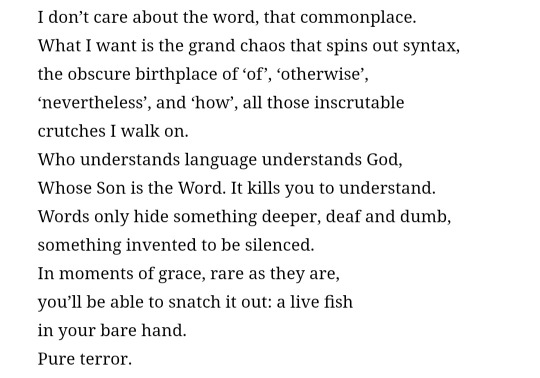
Adélia Prado, "Before Names", The Mystical Rose: Selected Poems, trans. Ellen Doré Watson
76 notes
·
View notes
Quote
I’m looking for the saddest thing, which once found
will never be lost again, because it will follow me
more loyal than a dog, the ghost
of a dog, sadness beyond words.
Adélia Prado, "Seductive Sadness Winks at Me," The Mystical Rose: Selected Poems (Bloodaxe Books, 2015)
193 notes
·
View notes
Note
if it’s not too much to ask, what are your obscure book recommendations?
This is a small list I came up with! As always, please reach out if you're interested in a title and want a comprehensive (or as close to) list of content warnings. Many of the books deal with mature topics, please be aware.
Bunny - Mona Awad
Samantha Heather Mackey couldn't be more of an outsider in her small, highly selective MFA program at New England's Warren University. A scholarship student who prefers the company of her dark imagination to that of most people, she is utterly repelled by the rest of her fiction writing cohort--a clique of unbearably twee rich girls who call each other "Bunny," and seem to move and speak as one.
But everything changes when Samantha receives an invitation to the Bunnies' fabled "Smut Salon," and finds herself inexplicably drawn to their front door--ditching her only friend, Ava, in the process. As Samantha plunges deeper and deeper into the Bunnies' sinister yet saccharine world, beginning to take part in the ritualistic off-campus "Workshop" where they conjure their monstrous creations, the edges of reality begin to blur. Soon, her friendships with Ava and the Bunnies will be brought into deadly collision.
The Garden of the Finzi-Continis - Giorgio Bassani
Giorgio Bassani's acclaimed novel of unrequited love and the plight of the Italian Jews on the brink of World War II has become a classic of modern Italian literature.
Made into an Academy Award winning film in 1970, "The Garden of the Finzi Continis "is a richly evocative and nostalgic depiction of prewar Italy. The narrator, a young middle-class Jew in the Italian city of Ferrara, has long been fascinated from afar by the Finzi-Continis, a wealthy and aristocratic Jewish family, and especially by their charming daughter Micol. But it is not until 1938 that he is invited behind the walls of their lavish estate, as local Jews begin to gather there to avoid the racial laws of the Fascists, and the garden of the Finzi-Continis becomes a sort of idyllic sanctuary in an increasingly brutal world. Years later after the war, the narrator returns in memory to his doomed relationship with the lovely Micol, and to the predicament that faced all the Ferrarese Jews, in this unforgettably wrenching portrait of a community about to be destroyed by the world outside the garden walls."
The Mystical Rose - Adélia Prado
Adelia Prado was 'discovered' when she was nearly 40 by Brazil's foremost modern poet, Carlos Drummond de Andrade, who was astonished to read her 'phenomenal' poems, launching her literary career with his announcement that St Francis was dictating verses to a housewife in the provincial backwater of Minas Gerais. Psychiatrists in droves made the pilgrimage to Divinópolis to delve into the psyche of this devout Catholic who wrote startlingly pungent poems of and from the body; they were politely served coffee and sent back to the city.
Midnight's Children - Salman Rushdie
Saleem Sinai was born at midnight, the midnight of India's independence, and found himself mysteriously "handcuffed to history" by the coincidence. He is one of 1,001 children born at the midnight hour, each of them endowed with an extraordinary talent—and whose privilege and curse it is to be both master and victims of their times. Through Saleem's gifts—inner ear and wildly sensitive sense of smell—we are drawn into a fascinating family saga set against the vast, colourful background of the India of the 20th century.
Autobiography of a corpse - Sigizmund Krzhizhanovsky
The stakes are wildly high in Sigizmund Krzhizhanovsky's fantastic and blackly comic philosophical fables, which abound in nested narratives and wild paradoxes. This new collection of eleven mind-bending and spellbinding tales includes some of Krzhizhanovsky's most dazzling conceits: a provincial journalist who moves to Moscow finds his existence consumed by the autobiography of his room's previous occupant; the fingers of a celebrated pianist's right hand run away to spend a night alone on the city streets; a man's lifelong quest to bite his own elbow inspires both a hugely popular circus act and a new refutation of Kant. Ordinary reality cracks open before our eyes in the pages of Autobiography of a Corpse, and the extraordinary spills out.
Beloved - Toni Morrison
Sethe was born a slave and escaped to Ohio, but eighteen years later she is still not free. She has borne the unthinkable and not gone mad, yet she is still held captive by memories of Sweet Home, the beautiful farm where so many hideous things happened. Meanwhile Sethe’s house has long been troubled by the angry, destructive ghost of her baby, who died nameless and whose tombstone is engraved with a single word: Beloved.
Sethe works at beating back the past, but it makes itself heard and felt incessantly in her memory and in the lives of those around her. When a mysterious teenage girl arrives, calling herself Beloved, Sethe’s terrible secret explodes into the present.
The Bloody Chamber - Angela Carter
In her masterpiece, The Bloody Chamber—which includes the story that is the basis of Neil Jordan’s 1984 movie The Company of Wolves—she spins subversively dark and sensual versions of familiar fairy tales and legends like “Little Red Riding Hood,” “Bluebeard,” “Puss in Boots,” and “Beauty and the Beast,” giving them exhilarating new life in a style steeped in the romantic trappings of the gothic tradition
Frankenstein in Baghdad - Ahmed Saadawi
From the rubble-strewn streets of U.S.-occupied Baghdad, Hadi--a scavenger and an oddball fixture at a local café--collects human body parts and stitches them together to create a corpse. His goal, he claims, is for the government to recognize the parts as people and to give them proper burial. But when the corpse goes missing, a wave of eerie murders sweeps the city, and reports stream in of a horrendous-looking criminal who, though shot, cannot be killed. Hadi soon realizes he's created a monster, one that needs human flesh to survive--first from the guilty, and then from anyone in its path. A prizewinning novel by "Baghdad's new literary star" (The New York Times), Frankenstein in Baghdad captures with white-knuckle horror and black humor the surreal reality of contemporary Iraq.
5 notes
·
View notes
Text

Then quickly rose Sir Bedivere, and ran,
And, leaping down the ridges lightly, plunged
Among the bulrush-beds, and clutch'd the sword,
And strongly wheel'd and threw it. The great brand
Made lightnings in the splendour of the moon,
And flashing round and round, and whirl'd in an arch,
Shot like a streamer of the northern morn,
Seen where the moving isles of winter shock
By night, with noises of the northern sea.
So flash'd and fell the brand Excalibur:
But ere he dipt the surface, rose an arm
Clothed in white samite, mystic, wonderful,
And caught him by the hilt, and brandish'd him
Three times, and drew him under in the mere.
-selection from Tennyson’s Morte D’ Arthur poem
3 notes
·
View notes
Text
I was tagged by the amazing @mlle-julies-letter-opener! Thank you so much lovely! 🖤
Name/nickname: Manda but I’m totally open to other nicknames if you want to give me one!
Gender: Female
Star sign: Taurus
Height: About 5’4”
Time: 10:40 p.m.
Birthday: April 25th
Favorite bands: Eisley, The Decemberists, Tegan and Sara, Metric, Young the Giant, Cold War Kids, Delta Rae, Saint Motel, flora cash, The National, Coco Rosie, Arctic Monkeys, Chvrches, Fleetwood Mac, My Brightest Diamond, Emily Wells, Stars, Yeah Yeah Yeahs, The Kills, Silversun Pickups, Night Terrors of 1927, Daughter, Dry the River, The Bird and the Bee, others
Favorite artists: Lana Del Rey, Lorde, Gin Wigmore, Ivy Levan (her older work), Lola Blanc, Alex Winston, Halsey, Lia Ices, St. Vincent, Banks, Michl, Iron and Wine, Kate Bush, Loboda, Simon Wilcox, Regina Spektor, Zella Day, Melissa McClelland, Marina, City and Colour, Damien Rice, others
I also want to list some pop surrealist artists I love in case you want to check them out: Mark Ryden, Brandi Milne, Camille Rose Garcia, Tara Mcpherson, Camilla d’Errico, Gustavo Rimada, Jennybird Alcantara, Amy Sol, Audrey Kawasaki, Mab Graves, Lori Earley
Last movie: I haven’t watched one in the past few days
Last show: Ratched
When did I create this blog: In February of 2019
What do I post: Whatever resonates with me! Art, music, fashion, the mystical, words and my own work as well.
Last thing you googled: A question about music theory
Other blogs: I post my poetry and the words of others to @blackmoonmusings, I post my music to @amandasheehansinger, I post my photography to @aphelion333photography and I post my drawings to @amandasheehanart. The most active of the blogs is Blackmoonmusings. I have two other blogs that I won’t name as they are very inactive right now.
Why I chose my url: It’s my stage name for my music (my real name is Amanda Sheehan)
Average hours of sleep: 7 or 8
Lucky number: I don’t think I have one but my favorite number is 777
What am I wearing: Warm black pajamas
Dream job: In the arts
Dream trip: Going back to Iceland and seeing the central part of it that I missed seeing during my previous trips there.
Favourite food: BREAD
Nationality: American
Favourite song: Born to Die by Lana Del Rey
Last book read: The Selected Poems of Marina Tsvetaeva
Top three fictional universes I’d like to live in: A Haruki Murakami universe, and I just really wish I’d lived during the golden age of Hollywood
I shall tag: Whoever feels like doing this! I’d love to read your answers!
15 notes
·
View notes
Text

Adélia Prado, from The Mystical Rose: Selected Poems translated by Ellen Doré Watson; "Chamberpot"
Text ID: My heaven is gothic / and on fire.
#adélia prado#the mystical rose#the mystical rose: selected poems#poetry#poetry in translation#brazilian literature#lit#miscellanea#<3
2K notes
·
View notes
Text
Essay on Folklore and Mysticism in some of Yeats works
In this essay I will address the way Yeats uses folklore and mysticism in his many works such as plays and poems. In order to do this essay the following books were used : “Folklore and W.B.Yeats:the function of folklore elements in three early plays" by Birgit Bramsback , “Yeats , Philosophy and the Occult” by Matthew Gigson and Neil Mann , and “Music and the Irish Literary Imagination” by Harry White.
Folklore represents the beliefs , legends and customs of common people and the main idea of it is tradition , which is something that is handed from one person to another by memory or written record. Irish legends can be divided into several categories such as cattle-raids , battles , and adventures , but later Irish tales started to be divided into cycles. There are four main cycles : The first one is the Mythological Cycle, which describes the origins of Irish deities, the second one is called the Ulster Cycle (the most famous story in this cycle is the “Tain bo Cuailnge”),the third cycle is called the Fenian Cycle in honor of the hero Finn MacCumhall , the fourth and final cycle is called the Historical Cycle. Yeats often used the first three cycles and never used the last one. Folklore can be divided in three categories : traditional tales , traditional popular belief , and folk poetry. The first category provides us with themes , motifs and symbols. The second category has largely to do with the concept of the Otherworld. The third category sets the tone of the scenes , intensifies emotions and conflicts and also provides us the theme of rebirth and transformation. Yeats devoted most of his time in uniting poetry with magic , and he was responsible for the Celtic revival and worked for the preservation of folklore and its communication to a larger number of people , and the use of it in creative writing. He dreamed that folklore would function as “living organism in a country's literature” and he often mentioned that irish culture had a rich Celtic tradition at its disposal and that irish poets should use these stories and pass them on to listeners all over the world.
To Yeats the word folk meant all the majority of illiterate people of the irish country side and he believed that folklore should be used to “vitalize” literature.
One example of this is his poem entitled “By the Roadside” , in which Yeats describes his going one night to “a wide place on the Kiltartan road to listen to some irish songs” where he heard traditional irish songs and saw folk dancing performed. According to him , a poet should listen to storytellers and have access to symbols and stories in Folk imagination which is why he edited many collections of stories such as “Fairy and Folk tales of the Irish Peasantry”.
According to Birgit Bramsbäck , “Yeats drew folklore from two main sources : from his personal work and from material previously adapted or treated in a literary way”.
In one of his plays entitled “The Land of Heart's desire” we can find the story of a newly married bride who is taken away to fairyland. In Ireland there are countless tales and legends about meetings between faeries and mortals. In “Irish Fairy and Folk Tales” there are many stories about fairies and humans being taken by them.
There are many types of fairies in the Irish fairy lore with different abilities and characteristics. These include leprechauns, banshees, changelings and many others. The origin of Irish fairies can be dated back to the ancient Celtic beliefs of pagan Gods and supernatural beings.
The poem “The Host of the Air” is about the story of a married woman named Bridget who was “tempted away” by fairy pipers. This story takes place near the Heart Lake.
Fairy music plays a major part in the play previously mentioned and many beliefs among the Irish country ended up “woven into the play”. The main difference between the tales and his play is that the character named Mary does not see herself as a victim, but as a specifically selected individual whose destiny lies in the Otherworld ( in Yeats early works he was always turning his imagination to the Otherworld and the belief that the veil between the two worlds is very thin). Mary fears and longs for the Otherworld and in her loneliness she thinks and talks about the faeries. The wind in this poem symbolizes the fairy world and Mary longs to be as free as the wind and to be united with the faeries. Yeats presents us with several theories about who the faeries are , and the suggestion that perhaps they are human souls foreshadows Yeats belief in the “Plastic power of the soul”. According to Birgit Bramsbäck, “ Mary's soul is in contact with this invisible world of faeries whose song strikes a familiar note in her soul” and there is very short step between the human world and the fairy world.
In this play Yeats also uses fire symbolism , as the fairy child has the power to change the primroses into flames and they become enchanted “like Nature herself” and the fairy uses them to have power over Mary. We can see that Mary feels divided between these elemental powers and her husband whom she loves ( Yeats uses folk beliefs in the depiction between Mary and her husband and he also uses it to enhance the conflict between the visible world and the invisible one).
In the play , the fairy is symbol of beauty and love ,and the Otherworld is everywhere as Mary hears the fairy's voice in the wind.
We can see that this play is full of fairy songs and Mary is clearly drawn to this dream world whose call she keeps hearing in the wind ( in Ireland there has always been a very strong belief in fairy music because people thought that it allured many innocents to fairyland).
Yeats was clearly influence by many Irish legends and myths when he wrote the play“The Shadowy Waters” , as there are few elements of black magic and oral lure ( in his drafts he had included more of these elements than he included in the published version). We can see that the mythological tale of “The dream of Oengus” underlies this play because they both share the same theme : a woman that appears to the hero in a dream. In this play there is also the bird symbolism which is present in many other plays and poems by Yeats.
According to Birgit Bramsbäk , in “The Shadowy Waters”, “the Otherworld is located at sea and the voyage undertaken by Forgael is a quest for this land and the immortal love to be enjoyed there.” The natural elements in this play such as the sea and the storm are vital symbols because there is a clear association of the storm with the Ever-living. The Otherworld vision relates to love , desire and a hope for immortality. Brigit Bramsbäck also states that “ in this play there is a symbolic use of the combination of wind , spirit , desire and hope but “the vague desires and hopes” are changed into a strong desire to experience love in “immortal fashion”. In this play Yeats portrays the so called visible world as being in constant conflict with the “ideal world” to which specifically selected individuals are drawn.
In “The Countess Cathleen” , Yeats tells us the story of Countess Cathleen who is a known figure of Irish legends. According to the legend, when a famine striked Ireland , Satan sent demons to buy the souls of the starving Irish but Cathleen ended up selling her estates and possessions in order to buy the people food and keep them from selling their souls. But in the end Satan defeats her and she chooses to sacrifice herself for the poor people.
According to Bramsbäck “The Countess' legendary donation of her worldly possessions takes on an otherworldly aspect in this poem because it suggests that Cathleen, in giving over her body, lets go of her heavy burden. She dances lightly and wisely in the heavens, celebrating her sacrifice and her role in the grand order of the universe.” In this play the countess is meant to represent martyrdom.As we can see there are quite a number of folkloric symbols , legends and ancient tales and myths portrayed in these plays.
In the poem entitled “A Fairy Song” , Yeats was inspired by the story of Diarmuid and Gráinne. We can consider this poem to be about the origin of myths. As I have previously mentioned , it is believed that faeries inhabit the mythical world and because of that they are immortal.
The cromlech can symbolize 2 things : a portal to the realm of the Faeries , and a monument that immortalizes the lives of Diarmuid and Grania. Therefore we can say that the cromlech is a symbol of transition because in the poem the fairies say that Diarmuid and Grania are “ new from the world” , which means that they have entered the fairy world.
The poem entitled “The Song of Wandering Aengus” is about the life the main character called Aengus who according to the legend belonged to a mythical people who conquered Ireland after having defeated the native tribes of the Fir Bolg. Aengus was considered to be the god of love and youth. In this poem Yeats tells the story of how Aengus fell in love with a girl he had seen in a dream and spent years searching for her , which can be seen as the lifelong search for a soulmate. In the poem entitled “Who Goes With Fergus” , Fergus “represents the archetype of the mystical poet who gives up pursuit of the worldly to seek the spiritual realms.” In this poem Yeats is asking people to pursue the mystic which in this poem is symbolized by the woods , the stars and the sea. The poem “The Rose Upon the Rood of Time” is about the nationalist vision of Ireland symbolized by the rose in this poem. It is believed that the rose also symbolizes Maud Gonne , who was a female revolutionary. In this poem , Yeats promises to sing about some ancient figures , namely druids, who were considered to be very important figures in Ireland.He also promises to sing of “Cuchulain, the hound of Culain”,the hero of Irish myth cycles.
In the poem “Byzantium” , Yeats describes the realm of spirits in which we can see that the world of spirits is a dark place because the speaker does not know who or what he is looking at.
In conclusion , Yeats deeply believed in the interaction between folklore and literature and explored the living traditions as well as the tales of many generations before and used numerous symbols such as faeries , animals and natural elements to create an arcane world of magic , and it was his deep interest in spiritualism, Irish myths and legends, and his celebration of Irish culture that we are able to see in many of his works. Yeats exploration of the esoteric helped him to get access to this primary field of consciousness and imagination. According to Yeats “the borders of our mind are always shifting, and many minds can flow into one another and create or reveal, a single energy ,and our memories are part of one great memory, the memory of Nature herself and this great mind and great memory can be evoked by symbols.”
Bibliography:
“Folklore and W.B.Yeats:the function of folklore elements in three early plays" by Birgit Bramsback.
“Yeats , Philosophy and the Occult” by Matthew Gigson and Neil Mann.
“Music and the Irish Literary Imagination” by Harry White.
“W.B. Yeats and the music of poetry” by Harry White.
“By the roadside” by Yeats
“The Land of Heart's desire” by Yeats
“The Host of the Air” by Yeats
“The Shadowy Waters” by Yeats
“The Countess Cathleen” by Yeats
“A Fairy Song” by Yeats
“The Song of Wandering Aengus” by Yeats
“Who Goes With Fergus” by Yeats
“The Rose Upon the Rood of Time” by Yeats
5 notes
·
View notes
Quote
My heaven is gothic
and on fire.
Adélia Prado, The Mystical Rose: Selected Poems
32 notes
·
View notes
Text
SECRETS OF THE SATANIC TEMPLE ~ Part One
TEXT 6: THE TAPESTRY OF SATANIC BLACK MAGICK
A question I am often asked is ‘what are the main powers and energies behind the Workings of Satanic Magick?’ … the answer to such a question cannot be given in a brief sentence to any satisfaction.
In short the main powers behind Satanic Black Magick are the power of Word, the power of Imitative Magick, deep faith in the force of Satan and His Demons, Carnal and Primal currents and the ineffable power of Inversion.
These are of cause the working powers behind Black Magick in a practical sense but the true Power lies with Satan and the Demons of Hell themselves, for it is their Power we are summoning through the above practical techniques.
The Primal and Carnal energies behind the Workings of Black Magick are physical and emotive currents such as sexual rapture, blood letting, the raising of emotional powers such as rage, lust and desire … and of cause the forces of creation themselves.
As said however Inversion is also a powerful tool along with its kindred elements such as reversal, blasphemy, deviation and adversity, and so the merging of Inversion with these primal and carnal currents is of even greater power.
Therefore sexual acts which cannot lead to procreation are an adverse action and one blasphemous to God, therefore oral and anal sex are sacrosanct acts in the eyes of the Demonic.
The Arts of Fetishism and the merging of pleasure and pain are also adverse sexual acts in the eyes Name of God for they are obtaining sexual rapture and mental stimulus through actions which not only please the Demons themselves but offer no gain to the Nazarene’s order to “Go forth and multiply” … sexual pleasure and climax from deviant methods of sexual practice are powerful tools in the Black Arts.
Of cause blood has always held a powerful role in Ritual Magick and Black Magick Rites be it through the devotional spilling of the Initiate’s blood in offering to the Dark Ones or the act of Blood Sacrifice to the Infernal Lords of Hell.
Voluntary Blood Sacrifice (as in that promoted by Order Of The Nine Angles) is a power Ritual action which encompasses both of the above intentions, involuntary Blood Sacrifice releases even greater power as the fear, pain and death laced with terror from the victim releases a potent merging of Dark Negative and Primal Creative energy.
The power of Word is another important aspect of Dark Satanic Rites, few things in life carry more sustaining energy than words, they are at the core of life on all levels.
Be it the emotive Poem, the inspirational Speech, the mystical Incantation, the Powerful Conjuration, the brutal insult or the loving statement words penetrate deep within the subconscious and activate forces within that strange realm.
The verbal injury shall be remembered long after the thrown fist in anger, the declaration of love long after the rose has shriveled.
The powerfully written Evocation, Invocation, Incantation or Curse vibrates through the veils activating responses on all realms and words should always be carefully selected when being applied to the Magickal Text - they root themselves in the realms they are designated to take effect.
The power of Names is also an extension of this Magickal Current and the Names of Spirits contain the very core of their Power … we have all seen the warnings not to speak a Demon’s Name or the secret Names of God aloud.
These are not the idle warnings of the nervous, the very whispering of the Name of a Demon vibrates on the spheres of Hell, to speak the Demon’s Name is to draw the Demon’s attention and energy toward you.
Imitative/Sympathetic Magick is another powerful tool in the armoury of the Satanist, the use of this kind of power raising dates back thousands of years and can be found in the oldest form of Magickal Workings and beliefs in Animism.
The binding of an object to the person one is Working Magick upon and then the inflicting of whatever is intended for that person upon that object is one of the most primordial forms of Magickal practice and one which carries immense power.
There lies connections between all things and many things (be they physical, emotive or other) have rich symbolism connected with them … the Black Magician harnesses these symbols and these connections in league with the aforementioned strands of Arcane power to form a tapestry of ineffable Magickal energy.
Some of the most obviously recognized of these Imitative Practices are of cause the use of effigies in Ritual (wax, clay or material figures) to represent the intended recipient of the Magickal energy often with a charged connection by the inclusion of hair, nails, blood, handwriting or photographs of the Magickal human object to encourage and sustain the link between them.
At the beginning of this Text faith was also mentioned as one of the strands of the Black Magick tapestry and this is of great importance … if you have no faith or belief in the Entities you are Conjuring then already the practice being performed is damaged severely.
It is hard in an age of cold scientific fact to believe with the faith people used to have - but know that Satan IS REAL, the Demons ARE REAL … the fact that Science cannot prove their existence yet is no reflection on the reality of Demonic beings but a statement on the immeasurable length of which Science has yet to progress.
Before Science and invention gave us Telescopes and Microscopes certain planets, atoms or diseases could not be detected, this does not mean that these very real things did not exist before they could be seen … the Scientist believes only in what can be seen or quantified which is a flawed perspective that would have resulted in no discovery ever being made if it has been adhered to from the start.
In closing this Text I should mention one more important element which ties all of the strands of the Magickal tapestry together and that is the energy of desire, without this all Magick is doomed to fail.
Performing a Rite to kill someone in anger if you do not really want them dead will fail . . . love Magick to bring someone to love you will not work if you do not really love them from the core of your soul.
The Dark Occultist must truly desire the end result of their Infernal Working if they are to see that result manifest before them … lack of sincerity, depth, feeling, true desire and intention are the harbingers of almost all failed Magickal Workings.
©Barnabas 2018

47 notes
·
View notes
Photo
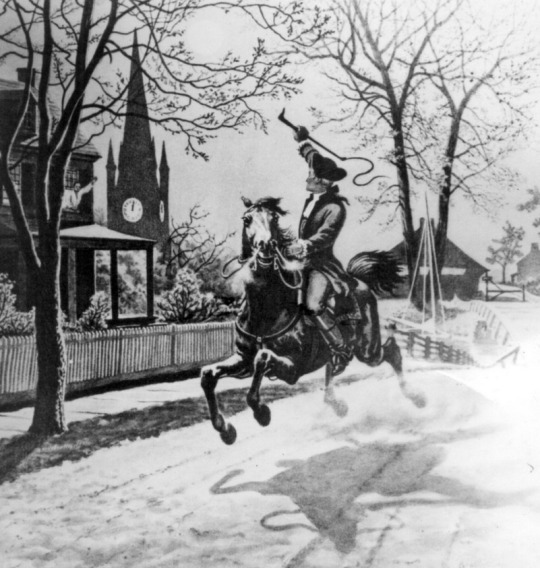
Paul Revere’s Ride
January 6th House Select Committee approves resolution to hold Steve Bannon in criminal contempt
CBS Mornings
https://www.youtube.com/watch?v=O_zjMFyDs5w&t=9s
Henry Wadsworth Longfellow - 1807-1882
https://poets.org/poem/paul-reveres-ride
Listen, my children, and you shall hear
Of the midnight ride of Paul Revere,
On the eighteenth of April, in Seventy-Five:
Hardly a man is now alive
Who remembers that famous day and year.
He said to his friend, “If the British march
By land or sea from the town to-night,
Hang a lantern aloft in the belfry-arch
Of the North-Church-tower, as a signal-light,—
One if by land, and two if by sea;
And I on the opposite shore will be,
Ready to ride and spread the alarm
Through every Middlesex village and farm,
For the country-folk to be up and to arm.”
Then he said “Good night!” and with muffled oar
Silently rowed to the Charlestown shore,
Just as the moon rose over the bay,
Where swinging wide at her moorings lay
The Somerset, British man-of-war:
A phantom ship, with each mast and spar
Across the moon, like a prison-bar,
And a huge black hulk, that was magnified
By its own reflection in the tide.
Meanwhile, his friend, through alley and street
Wanders and watches with eager ears,
Till in the silence around him he hears
The muster of men at the barrack door,
The sound of arms, and the tramp of feet,
And the measured tread of the grenadiers
Marching down to their boats on the shore.
Then he climbed to the tower of the church,
Up the wooden stairs, with stealthy tread,
To the belfry-chamber overhead,
And startled the pigeons from their perch
On the sombre rafters, that round him made
Masses and moving shapes of shade,—
By the trembling ladder, steep and tall,
To the highest window in the wall,
Where he paused to listen and look down
A moment on the roofs of the town,
And the moonlight flowing over all.
Beneath, in the churchyard, lay the dead,
In their night-encampment on the hill,
Wrapped in silence so deep and still
That he could hear, like a sentinel’s tread,
The watchful night-wind, as it went
Creeping along from tent to tent,
And seeming to whisper, “All is well!”
A moment only he feels the spell
Of the place and the hour, and the secret dread
Of the lonely belfry and the dead;
For suddenly all his thoughts are bent
On a shadowy something far away,
Where the river widens to meet the bay,—
A line of black, that bends and floats
On the rising tide, like a bridge of boats.
Meanwhile, impatient to mount and ride,
Booted and spurred, with a heavy stride,
On the opposite shore walked Paul Revere.
Now he patted his horse’s side,
Now gazed on the landscape far and near,
Then impetuous stamped the earth,
And turned and tightened his saddle-girth;
But mostly he watched with eager search
The belfry-tower of the old North Church,
As it rose above the graves on the hill,
Lonely and spectral and sombre and still.
And lo! as he looks, on the belfry’s height,
A glimmer, and then a gleam of light!
He springs to the saddle, the bridle he turns,
But lingers and gazes, till full on his sight
A second lamp in the belfry burns!
A hurry of hoofs in a village-street,
A shape in the moonlight, a bulk in the dark,
And beneath from the pebbles, in passing, a spark
Struck out by a steed that flies fearless and fleet:
That was all! And yet, through the gloom and the light,
The fate of a nation was riding that night;
And the spark struck out by that steed, in his flight,
Kindled the land into flame with its heat.
He has left the village and mounted the steep,
And beneath him, tranquil and broad and deep,
Is the Mystic, meeting the ocean tides;
And under the alders, that skirt its edge,
Now soft on the sand, now loud on the ledge,
Is heard the tramp of his steed as he rides.
It was twelve by the village clock
When he crossed the bridge into Medford town.
He heard the crowing of the cock,
And the barking of the farmer’s dog,
And felt the damp of the river-fog,
That rises when the sun goes down.
It was one by the village clock,
When he galloped into Lexington.
He saw the gilded weathercock
Swim in the moonlight as he passed,
And the meeting-house windows, blank and bare,
Gaze at him with a spectral glare,
As if they already stood aghast
At the bloody work they would look upon.
It was two by the village clock,
When he came to the bridge in Concord town.
He heard the bleating of the flock,
And the twitter of birds among the trees,
And felt the breath of the morning breeze
Blowing over the meadows brown.
And one was safe and asleep in his bed
Who at the bridge would be first to fall,
Who that day would be lying dead,
Pierced by a British musket-ball.
You know the rest. In the books you have read,
How the British Regulars fired and fled,—
How the farmers gave them ball for ball,
From behind each fence and farmyard-wall,
Chasing the red-coats down the lane,
Then crossing the fields to emerge again
Under the trees at the turn of the road,
And only pausing to fire and load.
So through the night rode Paul Revere;
And so through the night went his cry of alarm
To every Middlesex village and farm,—
A cry of defiance, and not of fear,
A voice in the darkness, a knock at the door,
And a word that shall echo forevermore!
For, borne on the night-wind of the Past,
Through all our history, to the last,
In the hour of darkness and peril and need,
The people will waken and listen to hear
The hurrying hoof-beats of that steed,
And the midnight message of Paul Revere.
0 notes
Text

Adélia Prado, "Serenade", The Mystical Rose: Selected Poems, trans. Ellen Doré Watson
40 notes
·
View notes